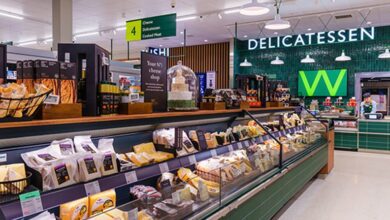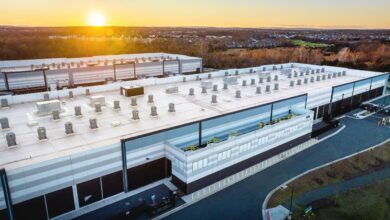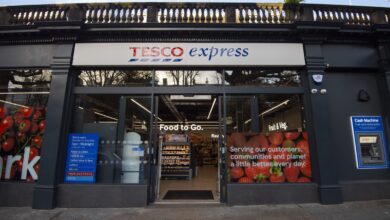How intelligence-led solutions can become preventative shoplifting measures for retailers
Recently, a new £600k initiative funded by some of the UK major retailers will allow police to run CCTV footage of suspected shoplifters through the National Database, in an effort to deter further criminal activity. Gary Higgins, from intelligence-led security solutions provider DeterTech, told us how Project Pegasus, in conjunction with other preventative solutions for retailers, will curb the recent spike in theft

Register to get 1 free article
Reveal the article below by registering for our email newsletter.
Want unlimited access? View Plans
Already have an account? Sign in
Do you think the UK is facing a shoplifting epidemic at the moment?
There’s plenty of evidence on the basis of the British Retail Consortium of a rise in criminality and violence towards shop workers. We’ve seen plenty of images of shoplifting episodes on various media channels and a lot of that is also reflected by some of DeterTech’s customers in the retail sector who are looking for solutions to help deter that type of criminality.
Do you have any data regarding the increasing amount of retailers adopting preventative measures?
Yes, we have our own criminal intelligence function and we’ve been collecting crime data for over 15 years. We take a specific interest in criminality and how it impacts our customers, specifically in the retail sector. We also have an information sharing agreement with the National Police Chief’s Council which allows all 43 police forces in the UK to share their crime data with DeterTech.
Recently there’s been a lot of talks regarding ‘Project Pegasus’, a £600k initiative funded by the major UK retailers which will scan faces of shoplifters on CCTV and run them through the Police National Database. In what way is Project Pegasus different?
I think it’s important that there’s a group of the UK’s largest retailers recognising that there’s an issue and recognising that the police don’t necessarily have all the data. They have committed to sharing their data with the police, and also providing funding to the police to increase the analytical pool that the police has in an operation, called Operation Opal, which is a national police intelligence unit that looks at serious and organised, acquisitive crime. And there is some research suggesting that a lot of criminality impacting retailers is organised criminality.
This new operation includes the image data that will be coming in from the CCTV systems in those retailers, but also in our streets. So now the police will be given the opportunity to collect, analyse that data, and then start to identify the offenders and that’s particularly the case around organised criminality, where you’ve got gangs of individuals who were targeting either individual retailers or certain types of assets.
Do you think this approach will be effective in deterring further shoplifting episodes across the country?
I think any method used to identify individuals and enable the police to help with building a picture of who’s involved, is useful. And on a lot of occasions local police officers will know who the offenders are. So if you’ve got local offenders committing repeat offences in stores in their local area, the local police officers will know they are and will be taking action against them.
What Pegasus does is allow the police to look at organised criminality when you’ve got gangs of offenders who move around the country, targeting specific retailers for specific assets. So it might be for instance that they’re after a particular phone or other electronics and they move around the country targeting retailers who sell it.
What are the most adopted preventative solutions by retailers at the moment?
CCTV is almost a given now in most big retail stores but offenders are also aware of that so they will often wear masks or put hoodies up. There’s also another type of CCTV system called PID 360, which has a 360 degree camera system that gives you a message saying that your presence has been detected. That’s a very popular system for retailers; some bring it out especially to protect the store at night.
So if you’re asking what stores should do, I’d say to absolutely use the CCTV systems and the body cams but enhance them with a unique forensic marker. So in the event of the police struggling with the identification of evidence through facial recognition, providing unique forensic evidence that can link the offender to the scene of the crime is important. And that’s what we do at DeterTech.
How does forensic marking work?
There’s two things that we do. We use an asset marker. Which makes the product uniquely identifiable. It’s a water-based product that has three key elements. It contains a fluorescence, which is invisible to the naked eye, but glows a unique yellow-green colour under UV light. It contains a polymer which makes it stick to the product. So if you were to paint it onto your mobile phone, for instance, it will be on the mobile phone for the life of that phone. And then it also contains a unique forensic code. So in the event of that asset being stolen and the police stopping someone in possession of that asset, our scientists incur laboratories would be able to uniquely identify that product back to its original owner or the retailer that has that on display.
Then, the second part of the solution is a spray. It’s the same concept but contained within a spray system. So typically in a store, the store security would have access to a panic button, and be able to press a button on that which starts the smart water system. So if they got offenders in the store, when they walk within the range of the system, it activates the spray and they get covered in SmartWater, which will stay on the clothing for the life of it and it stays on the skin for up to six weeks.
So in a situation where the police have attended a scene but the CCTV evidence is not good, they might be able to track down the offender, put a UV torch on and see if they have that yellow-green glow on. Their clothes will then be sent to our laboratories and we can confirm where the spray was activated from.
Is it cost-efficient for independent retailers to use forensic marking or is it a solution predominantly available to big national retailers?
Obviously we have big retailers like Tesco, Waitrose, BT, Samsung but we also have many independent retailers. The way it operates is linked into the store’s alarm system so it can be used as a robbery system during the day and then as a burglary system during the night so if someone breaks into the store during out of hours, the system activates in the same way it would during the day.
What types of products are usually a target for shoplifters?
Usually there is spiking activity whenever new phones are released onto the market. Designer and sports clothing are usually always targets. Things like alcohol, coffee, meat, anything that’s expensive in supermarkets. Especially during the cost of living crisis, this becomes more of a problem for retailers. And although you might think that it’s just local offenders stealing for their families, which indeed will happen, there is also a lot of organised criminality that recognises that because of the cost of living crisis there’s a market for selling these types of products so they will steal them in bulk and resell them.







